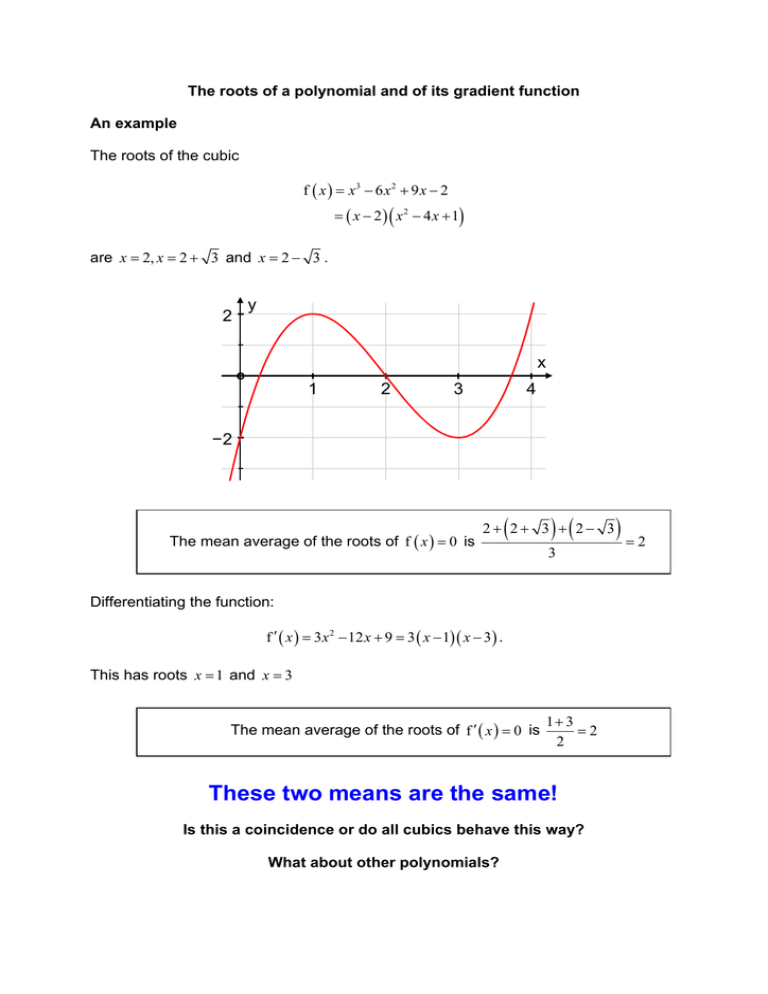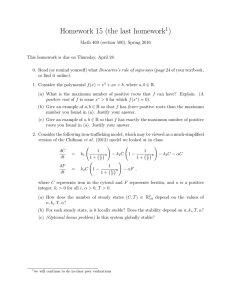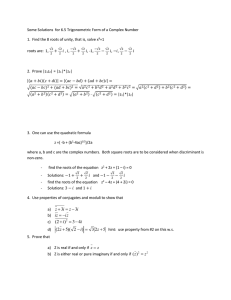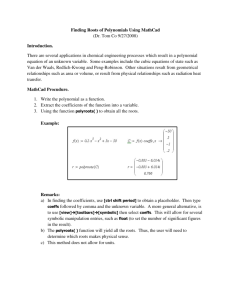advertisement

The roots of a polynomial and of its gradient function An example The roots of the cubic f x x3 6 x 2 9 x 2 x 2 x 2 4 x 1 are x 2, x 2 3 and x 2 3 . 2 y x 1 2 3 4 −2 The mean average of the roots of f x 0 is 2 2 3 2 3 3 Differentiating the function: f x 3 x 2 12 x 9 3 x 1 x 3 . This has roots x 1 and x 3 The mean average of the roots of f x 0 is 1 3 2 2 These two means are the same! Is this a coincidence or do all cubics behave this way? What about other polynomials? 2 A look at the general case Take a polynomial of order n . This will have n roots, some of which may be complex. Assuming the coefficient of x n is 1, the polynomial can be written in the form f x x a1 x a2 ... x an . This can be expanded: f x x n Ax n 1 ... Bx C , where A a1 a2 ... an . This implies that the mean average of the n roots, whether real or complex, of the A equation f x 0 is . n Differentiating f x gives f x nx n 1 A n 1 x n 2 ... B . Therefore, the sum of the n 1 roots, whether real or complex, of the equation A n 1 b f x 0 must be (using the familiar rule) and so the mean of these n a 1 A n 1 A roots is . n n 1 n For all polynomials the mean of the roots is equal to the mean of the roots of the derived function.





